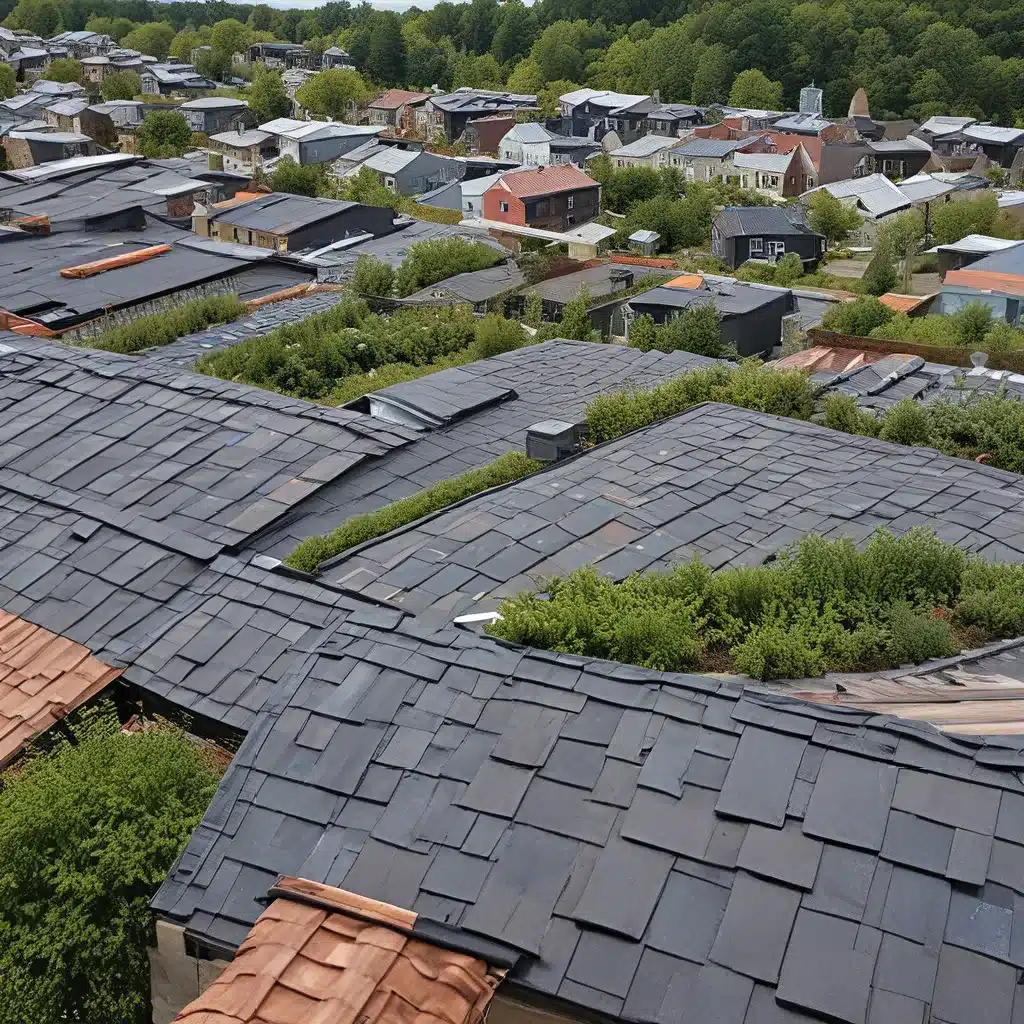
As a homeowner, the roof over my head is more than just a functional necessity – it’s a canvas for sustainable design that can make a real difference in our fight against climate change. In this article, I’ll take you on an inspiring journey through some of the most innovative and eco-friendly roofing solutions from around the world, and share practical tips to help you create your own sustainable roofscape.
Rooftops: The Unsung Heroes of Sustainable Design
When you think about it, our roofs have so much untapped potential. They’re often vast, underutilized spaces that could be transformed into vibrant, living ecosystems – providing insulation, generating renewable energy, and even supporting local wildlife. And the best part? These sustainable roofing practices don’t just benefit the environment; they can also save you money on your energy bills and add incredible visual interest to your home.
Let’s start by exploring some real-life examples of green buildings that are setting the standard for what’s possible. In Australia, the Pixel Building was the country’s first carbon-neutral office space, featuring colorful panels that provide shade and maximize daylight, as well as a roof that captures rainwater and a series of vertical wind turbines to generate power. Over in Sydney, the One Central Park residential development takes the concept of a “green roof” to new heights, quite literally – with 250 species of Australian plants and flowers cascading down the building’s facade.
Harnessing the Power of Wind and Water
But it’s not just about the plants – some buildings are using the natural elements around them to create truly sustainable energy solutions. Take the World Trade Center complex in Bahrain, for example. These iconic futuristic towers are strategically positioned to take advantage of the island nation’s abundant desert winds, with three turbines mounted on sky bridges between the towers to generate electricity. And over in Rio de Janeiro, the Rios Museum of Tomorrow uses a pumping system that draws cold water from the nearby Guanabara Bay to power its air-conditioning, reducing the building’s energy consumption.
Rooftops as Living, Breathing Ecosystems
But it’s not just about the energy savings – some buildings are taking sustainability to the next level by transforming their roofs into living, breathing ecosystems. At the Vancouver Convention Centre West, for instance, the rooftop features four hives of European honey bees that pollinate the native plants and grasses, helping to reduce heat buildup in the summer and retain warmth in the winter. And the building’s sloping roof even assists with water drainage and the distribution of seeds.
Sustainable Design in the World’s Tallest Buildings
It’s not just smaller-scale projects that are embracing sustainability – even the world’s tallest buildings are getting in on the action. Take the Shanghai Tower, for example. This architectural marvel not only has a platinum LEED certification, but it also features a transparent second skin that creates a buffer of captured air, serving as natural ventilation and reducing energy costs. And if that wasn’t enough, the tower also incorporates 270 wind turbines into its facade to power the exterior lights.
The Ultimate Mixed-Use Sustainable Project
And if you thought that was impressive, wait until you hear about CopenHill in Copenhagen. This power plant and sports facility is the ultimate mixed-use sustainable project, incorporating green roofs, solar panels, and even a ski slope on the building’s facade. It’s a true testament to the boundless possibilities of sustainable design.
Practical Tips for Your Sustainable Roofscape
Now that you’ve seen the incredible potential of sustainable roofing, you’re probably wondering: “How can I apply these principles to my own home?” Well, I’m here to tell you that you don’t have to be an architect or a millionaire to create your own sustainable roofscape. Here are a few practical tips to get you started:
-
Explore Solar Power: Solar panels are a no-brainer when it comes to sustainable roofing. Not only do they generate clean, renewable energy, but they can also save you money on your electricity bills in the long run. Check out Southern Roofing Company for more information on solar roof installation.
-
Go Green with a Living Roof: If you have the space, consider installing a green roof – a roof covered in vegetation that can reduce heat absorption, improve insulation, and support local wildlife. It’s a great way to create your own urban oasis.
-
Maximize Natural Ventilation: Strategically placed skylights and vents can help improve air circulation and reduce your reliance on energy-guzzling air conditioning. This is a simple and effective way to boost your home’s energy efficiency.
-
Prioritize Sustainable Materials: When it comes to your roof, choose materials that are durable, recyclable, and have a low environmental impact, like metal, slate, or eco-friendly asphalt shingles. This will not only reduce your carbon footprint, but it can also extend the lifespan of your roof.
Remember, sustainable roofing is not just about reducing your energy costs or saving the planet – it’s about creating a beautiful, functional space that can truly enhance your quality of life. So why not embrace the power of sustainable design and start crafting your own roofscape masterpiece today?